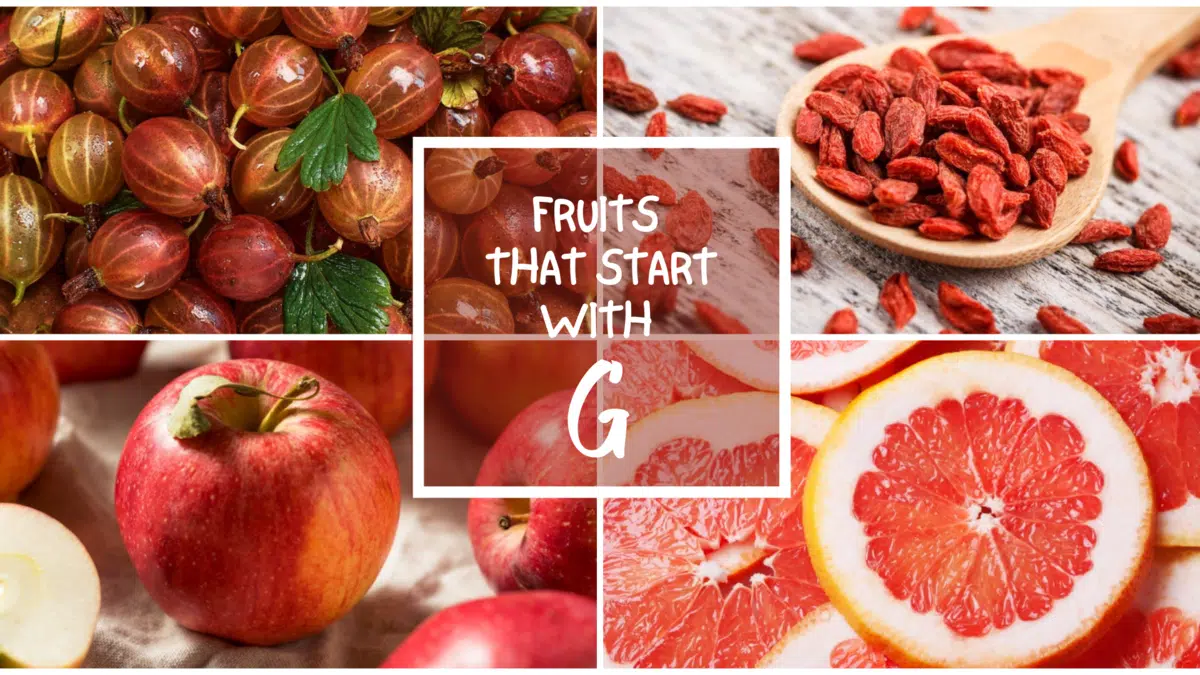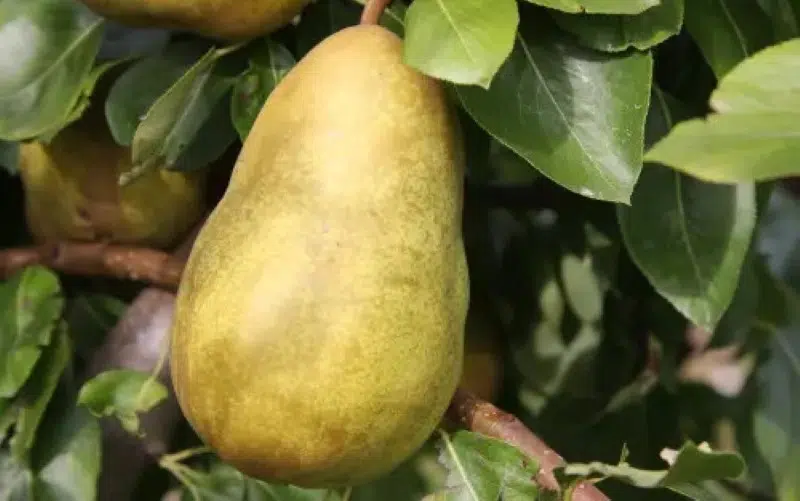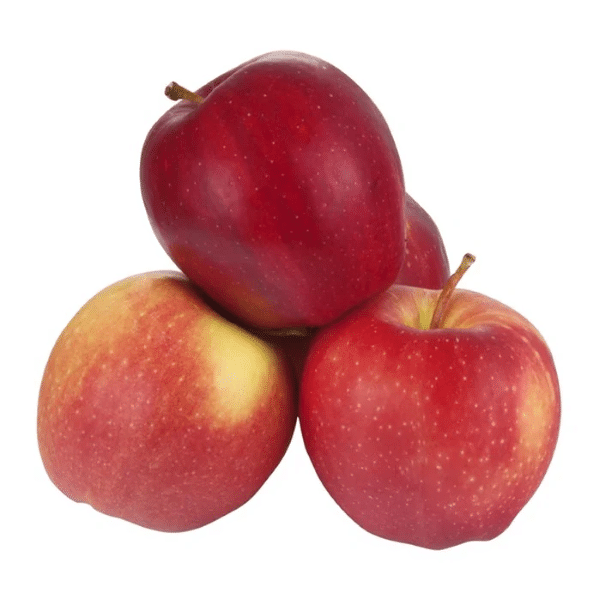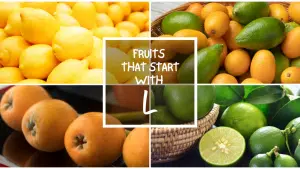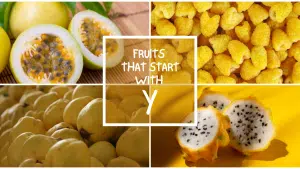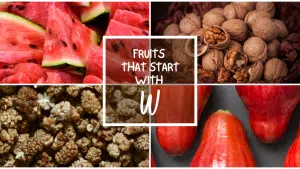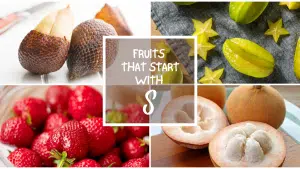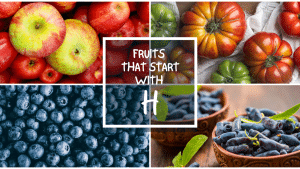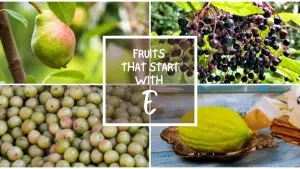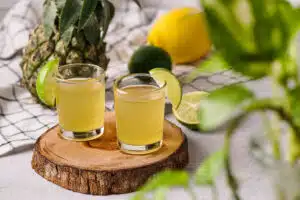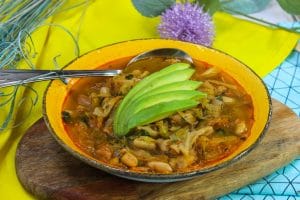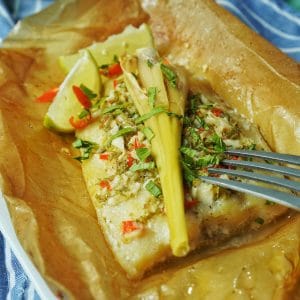All The Fruits That Start With G
Important Note: When you buy through our links, we may earn a commission. As an Amazon Associate we earn from qualifying purchases. Content, pricing, offers and availability are subject to change at any time - more info.
If your fruit journey has landed you at the letter G, you’re in for a treat. With fruits ranging from sweet and tropical to cool and crisp, the G fruits vary in complexity, availability, and flavor profiles. From fruits that are best eaten whole to those that are favored baked into sweet treats, the fruits on the G list are as diverse as they are enticing. Best of all, these are nutritious fruits that can easily broaden your diet. Take a look at the delectable fruits that begin with the letter G.
- Gac
- Gala Apple
- Galia Melon
- Gamboge
- Goji Berries
- Golden Delicious Apple
- Golden Kiwi
- Gooseberry
- Gorham Pear
- Granadilla
- Grapefruit
- Grapes
- Grapple
- Greek Fig
- Green Anjou Pear
- Green Apple
- Guanabana
- Guava
- The Final Letter
Gac
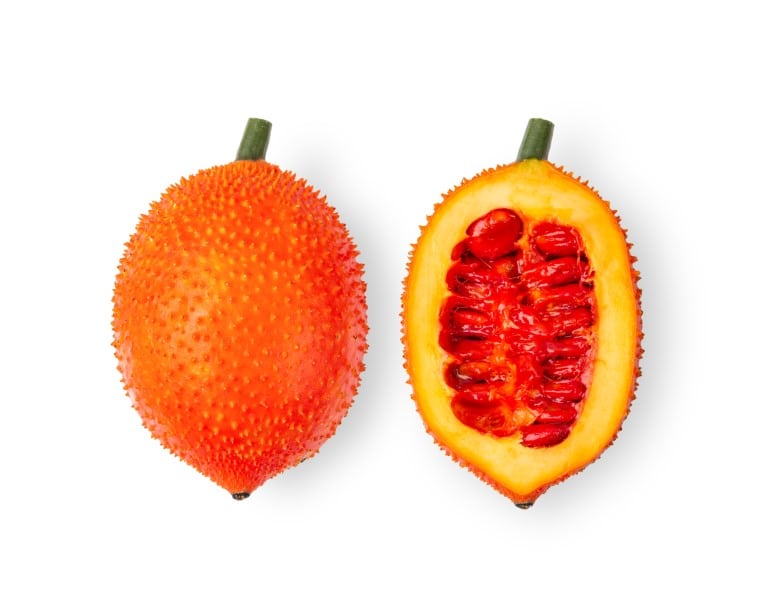
Initially cultivated in Vietnam, the gac is now grown in parts of Australia and the US and is known by the science community as Momordica cochinchinensis. The gac fruit flourishes in warmer climates where the temperature doesn’t drop below 60℉. Currently, California is the only state in the US that cultivates gac.
The gac is a vine fruit roughly the size and shape of a small melon; it has a hard exterior shell that must be cut into with a knife to reveal its pulp. Once inside the gac, you still have more work to do. The pulp, stuck to inedible seeds, must be scraped from the seeds in order to eat it. Gac’s pulp is mildly sweet, reminiscent of molasses, and it smells fresh like a cucumber. The pulp of gac is smooth and buttery, similar to an avocado. Of note, the gac is rich in fatty acids, carotenoids, Vitamin E, and other important nutrients.
Gala Apple
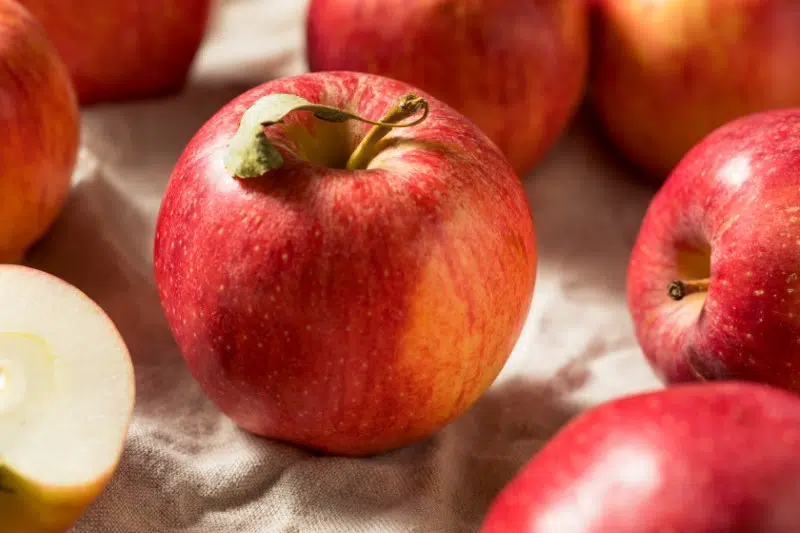
First discovered in New Zealand, the gala apple is a variety of the standard tree apple. A hybrid apple, the gala apple first arrived in the US in the early 1970s and it can be readily found in all 50 states. Technically dubbed the Malus Domestica ‘Gala,’ the gala apple thrives in the middle zone, moderate climates; it’s best harvested in the fall months.
Notably, the gala apple can be eaten whole with the exception of its seeds and core; it has a mildly sweet flavor and a floral aroma. The skin is a golden yellow with red streaking while its flesh is a pale yellow with a crisp texture. Gala apples are the perfect ingredient for sweet treats such as apple crisps, tarts, pies, and more. A wonderful addition to a balanced diet, gala apples are packed with dietary fiber, calcium, and potassium.
Galia Melon

A hybrid of cantaloupe and honeydew, the Galia melon, or Cucumis melo var. reticulatus, originated in Israel. The Galia melon looks like a cantaloupe on the outside and honeydew on the inside. This melon can be found all over the world in countries such as Guatemala, Costa Rica, Panama, Turkey, and Egypt. Furthermore, the Galia melon is cultivated domestically in southern parts of the US. Although it’s difficult to purchase them in grocery stores outside of the southern states in which they’re grown, Galia melons can easily be purchased online and shipped all over the country.
Galia melons are primarily eaten fresh, however, the rind and seeds are inedible. The flesh tastes exactly like a sweet cross between honeydew and cantaloupe but with a spicy aftertaste. Although perfectly delicious in its own right, the Galia melon can be awesomely paired with salads, cheeses, and salty meats; it also makes a great smoothie ingredient. High in dietary fiber, potassium, and vitamins A and C, the Galia melon packs a nutritious punch.
Gamboge
Native to the tropical climes of Southeast Asia, the gamboge is a tree fruit that’s also known as garcenia tinctoria. Although this tropical fruit is not grown domestically in the US, it can be imported for a pretty penny to all states except for California and Florida.
Gamboge is a small and round fruit that has a pointed protrusion on one side; on average it measures approximately eight centimeters in diameter. They are yellow and have smooth skin with a texture akin to an apple. These tree fruits can be eaten fresh; the skin is inedible and must be peeled, but the fleshy inside is sweet and sour. It can be eaten fresh or added to sauces, smoothies, and reductions. Lastly, this fruit is high in vitamin C.
Goji Berries
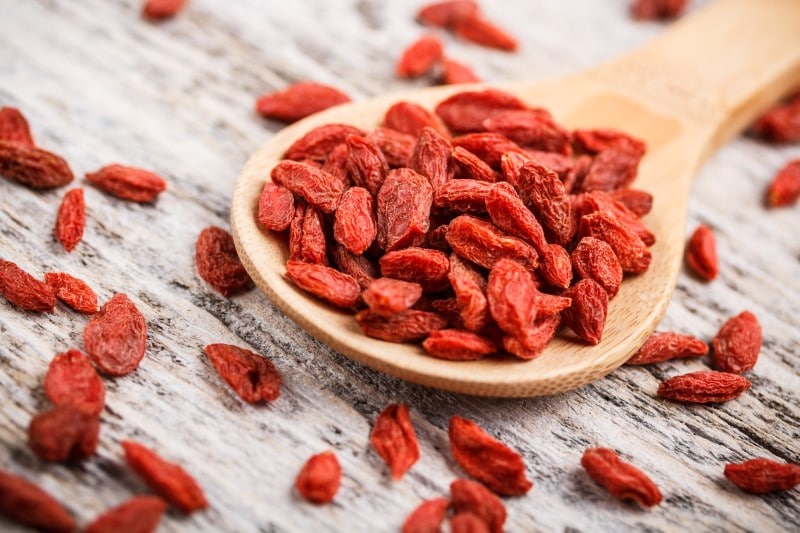
These shrub berries are scientifically known as Lycium barbarum and they hail from China. Although they aren’t grown domestically in the US, they can be found in the wild in countries such as Russia, Turkey, and Japan. However, they are available in specialty grocery and vitamin stores as well as online in the US.
Also known as wolfberries, goji berries are the shape and size of a whole almond and they’re red-orange. These berries lack any sweetness and are rather sour, verging on bitter; furthermore, they’re chewy in texture. Although goji berries aren’t typically eaten whole by themselves, they are commonly added to salads and other savory dishes as a topping. Moreover, they can be added to smoothies and sweet treats for a touch of sour flavor. Goji berries have many purported health benefits such as anti-inflammatory and antioxidative properties.
Golden Delicious Apple
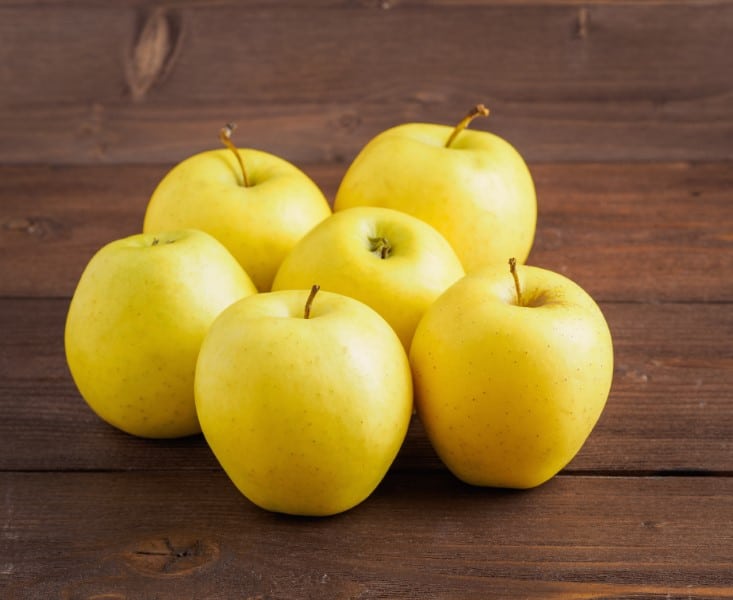
The Malus Domestica ‘golden delicious,’ or golden delicious apple, is native to West Virginia and is known as the Mountain State’s state fruit. Golden delicious apple trees thrive best in cooler climates though they are tolerant of heat. These apples can be found all over the US and are best harvested from mid-September to mid-October.
Golden delicious apples are the same size, shape, and texture as standard apples though their skin is, you guessed it, a lovely golden color. Both the skin and flesh of a golden delicious apple can be enjoyed whole; the flavor of this apple variety is sweet and cidery. Like other apples, the golden delicious variety is perfect for pies, tarts, crisps, and other sweet confections. These nutrient-rich apples are chock full of fiber, calcium, potassium, and carotene.
Golden Kiwi
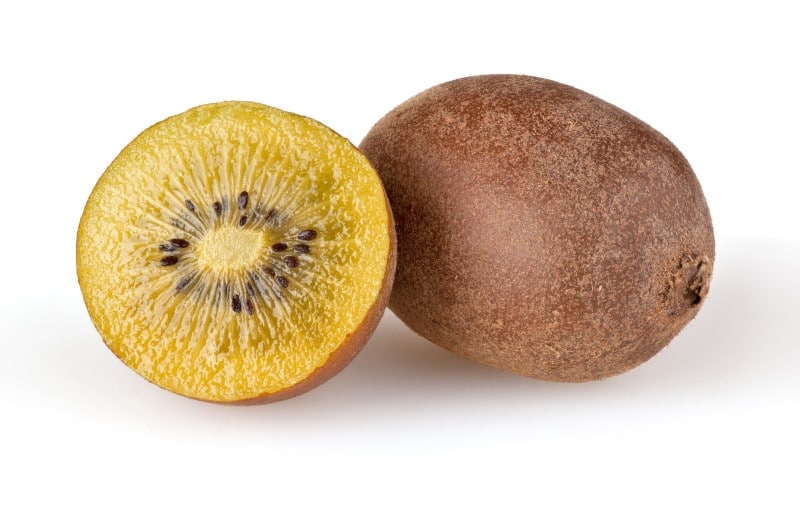
The Actinidia chinensis, or golden kiwi, is a vine fruit that was first found in China. A close relative to the standard green kiwi, the golden kiwi also grows abroad in places such as New Zealand and Eastern China. Domestically, the golden kiwi is cultivated in Reeltown, Alabama and it’s distributed throughout the continental US.
Like the standard green kiwi, the golden kiwi has an inedible, fuzzy brown skin that envelops its juicy, soft flesh. Unlike the standard kiwi, the golden kiwi’s flesh is gold in color and has a more tropical, tangier flavor profile. The seeds of the golden kiwi, like its green relative, are also edible. Although the golden kiwi is most commonly consumed whole, it can be added to fruit salads, juiced, or reduced to a tasty kiwi fruit sauce. Known to aid in gastrointestinal digestion, the golden kiwi is fraught with vitamins C and E as well as folate, antioxidants, phytonutrients, and enzymes.
Gooseberry
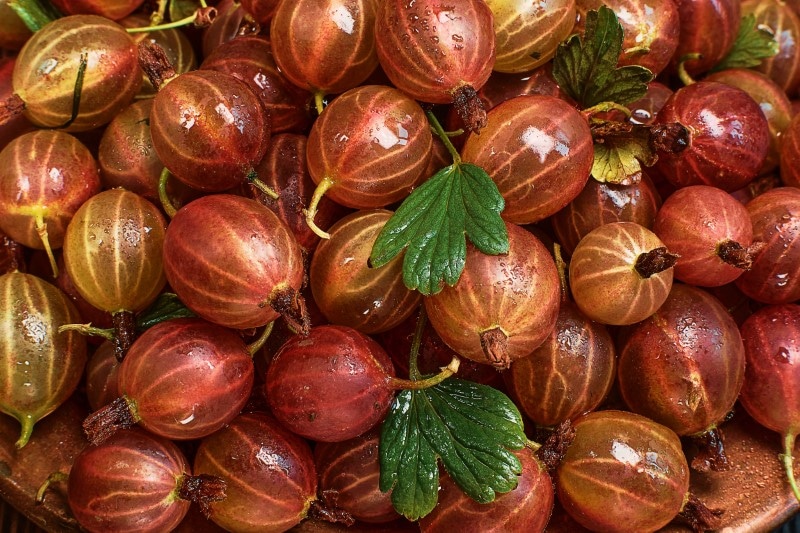
Member of the currant family the Ribes uva-crispa, or gooseberry, grows all over Europe and North America. As such this tasty fruit is readily available for purchase in the US. Interestingly, however, the gooseberry was once banned from being cultivated in the US; it was banned because it serves as a host to a toxic, tree-killing disease. Since growers have learned to remediate its toxicity, the gooseberry has made its comeback in the US.
Gooseberries are similar in size and shape to the green grape, however, the distinct white veining that runs through their light green flesh makes them look like a miniature watermelon. Gooseberries are eaten whole and sometimes as a topping to yogurts, cereals, and salads. Gooseberries are subtly sweet with the tartness of lemon and they have distinctly tropical undertones. Lastly, gooseberries are highly nutritious as they are rich in antioxidants and fiber while low in calories.
Gorham Pear
The Pyrus communis ‘Gorham,’ or Gorham pear as it’s better known, was originally founded in Europe in the 19th century. Since its founding, the Gorham pear has become a popular crop in the US. Cultivated throughout the US in places such as Washington and Oregon, the Gorham pear is readily available in grocery stores and farm stands.
Similar in shape and texture to a standard pear, the Gorham pear has pale green skin and crisp golden flesh. Further, they are sweet and juicy with a touch of acid. Notably, the Gorham pear can be eaten whole, except for its seeds, and it’s also the star of many delicious recipes. Some Gorham pear preparations include wrapped in prosciutto or atop savory salads.
Granadilla
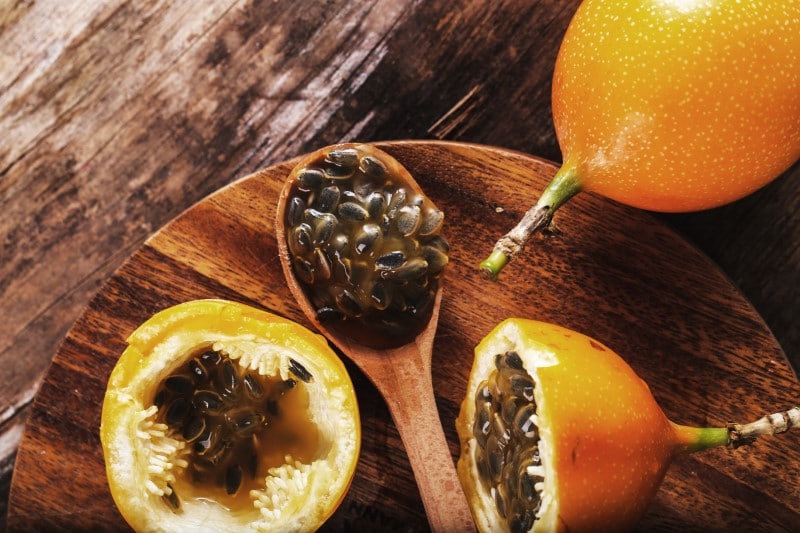
Similar to passionfruit, the granadilla, or Passiflora ligularis, is commonly found in parts of Mexico, Central America, and South American countries such as Bolivia and Peru. In the US, granadilla has been cultivated in Hawaii since the 1800s. It’s also a rare crop that’s sometimes found in southern Florida. The granadilla is hard to find in grocery stores within the US however, they can be easily acquired from online distributors.
Concerning its appearance, the granadilla has a firm orange skin and yellow, gelatinous pulp that’s full of edible black seeds. To eat granadilla you simply cut the fruit in half and spoon the pulp into your mouth. Besides being enjoyed in its whole form, granadilla can be made into sorbet, cheesecake, or curd to name a few of its common preparations.
Regular consumption of granadilla is said to improve immunity, reduce anxiety, and be a natural relaxant. Granadilla is packed with nutrients such as vitamins A, B1, B2, and C as well as iron, potassium, and antioxidants.
Grapefruit
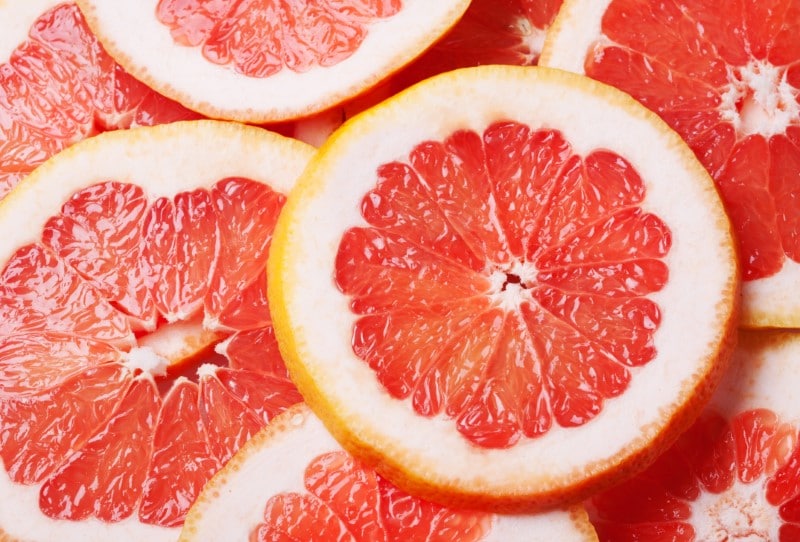
This citrus hybrid, scientifically known as Citrus × paradisi, was first discovered in Barbados. Today, however, grapefruits are grown around the world in places like South America, Australia, and South Africa as well as domestically in Florida, California, Texas, and Arizona. Grapefruits are a common produce-aisle fruit found all over the US.
Grapefruits are similar in texture to oranges however they’re a bit larger in diameter and pinker in color. The rind of the grapefruit is inedible but the pulp, which is commonly eaten whole, is juicy, tart, and citrusy. Grapefruits are also commonly juiced, blended into smoothies, or even baked into muffins. A great source of necessary vitamins, grapefruits contain vitamins B6 and C in addition to potassium, fiber, and phytonutrients.
Grapes

The discovery of grapes dates back to the Neolithic Era, nearly 12,000 years ago. Technically termed Vitis, grapes are a vine fruit that are cultivated globally. Although grapes are grown all over the US, the biggest domestic producers are California, Georgia, Michigan, New York, and North Carolina.
Grapes are oval and are grown in green and red varieties. The average-sized grape measures roughly one-quarter of an inch in diameter. Grapes have a crisp texture and a mildly sweet, sometimes tart flavor. Grapes are typically eaten whole, seeds and all. Other delightful ways to enjoy grapes included frozen, juiced, in salads, and fermented into wines. Lastly, grapes are a powerful source of vitamins K and B as well as copper which enhances energy production.
Grapple
A Grapple is an altered fresh apple that’s been soaked in a grape-flavored solution that makes the apple itself taste like a Concord grape. Contrary to popular assumption, the grapple is not a naturally occurring hybrid fruit, instead, it’s a Fuji or Gala apple that’s been modified. Developed in Washington State, the Grapple is distributed in all 50 states as well as online.
Grapples are the same in size, shape, and texture as a Gala apple, however, they taste exactly like a grape. Although they’re a delightful fruit to enjoy whole, the Grapple is featured in many distinct recipes such as cran-grapple compote, Grapple spritzer, and Grapple smoothies. Preserving all of the nutritional properties of the standard Washington apple, the Grapple is packed with vitamins A and C in addition to calcium and iron.
Greek Fig
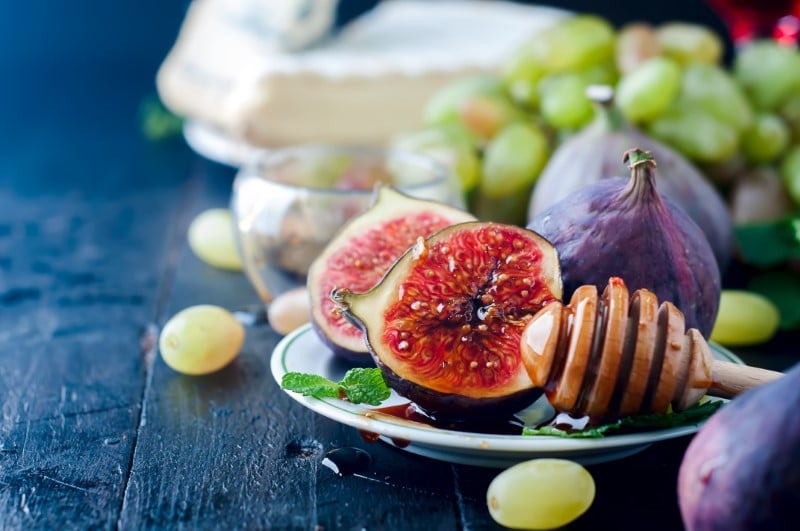
Botanically named the Ficus carica, Greek figs, which grow on Mulberry trees, originated in, you guessed it, Greece. Indigenous to the Mediterranean and Middle Eastern countries, the Greek fig has been around since ancient times. Greek figs require hot, dry climates to thrive; as such, they’re also grown domestically in California. Although they’re cultivated domestically, this variety of figs is commonly imported from other parts of the world.
Generally small and bulbous, Greek figs are soft, flavorful, and the color of a plum. Beneath its plum skin, the flesh of a Greek fig is usually pink in color but may vary a bit. Figs are wholly edible and have a subtly sweet, honeyed flavor. Delicious whole, in jams, atop salads, and well beyond, Greek figs are tasty and versatile. Lastly, Greek figs are a laudable source of potassium, which purportedly reduces blood pressure, as well as calcium, iron, and magnesium.
Green Anjou Pear
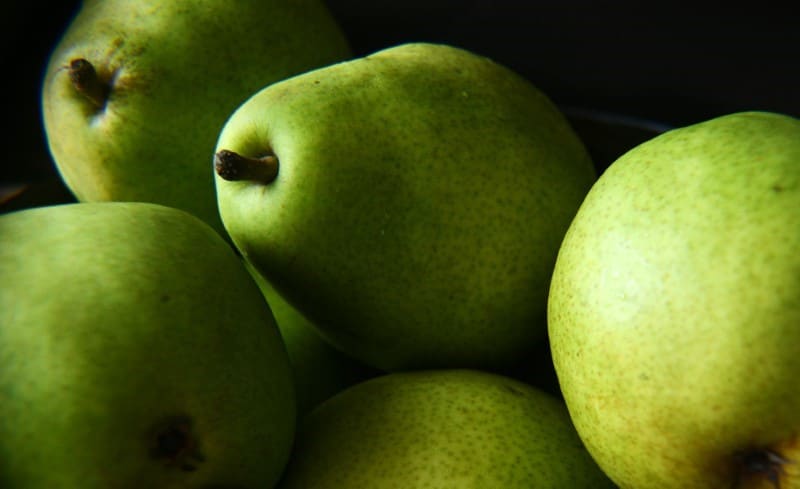
Named for the Anjou region of France, the Pyrus communis ‘D’Anjou,’ or green Anjou pear was first discovered in Belgium. From there, it traveled to England and later America in the mid-1800s. Although they’re most popularly cultivated domestically in Washington and Oregon, they can be grown nearly anywhere in the US with the right climate. Speaking of climate, green Anjou pears thrive in climates that are predominantly cold and wet.
The green Anjou pear is pale green and roughly egg-shaped. The skin and flesh of this fruit are edible though the seeds and core are not. The green Anjou pear is crisp and mildly sweet; they are typically eaten whole but can be enjoyed atop salads, juiced, or in sweet confections such as tarts. The green Anjou pear is a great addition to a well-balanced diet; they contain high levels of potassium and dietary fiber as well as vitamins A and C, iron, and calcium.
Green Apple
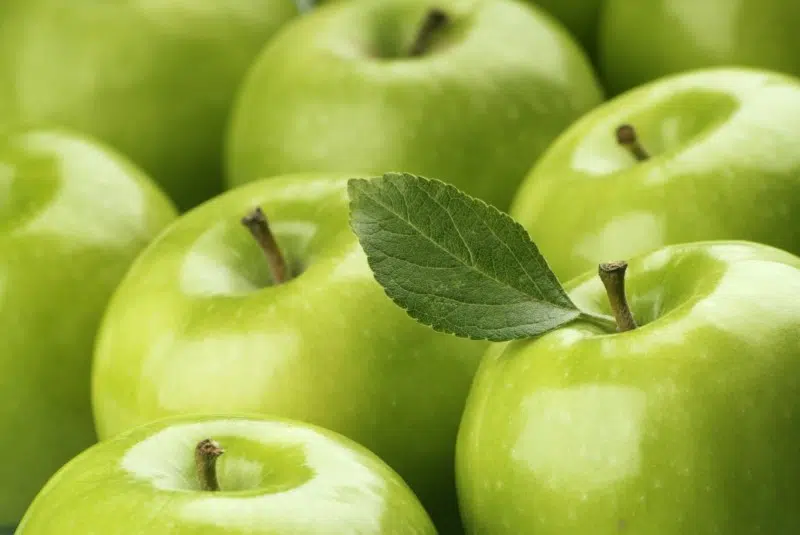
First cultivated in Australia, the green apple is technically coined the Malus; it’s also commonly referred to as the Granny Smith apple. Today, the green apple is commercially cultivated all over the world in places such as South Africa, Spain, France, and Italy. In the US, the green apple is primarily cultivated in Washington State; as such, they are easily found in grocery stores all over the US.
The green apple has pale green, edible skin that envelops a crisp, white flesh. Green apples are slightly sweet and overtly sour, however nonetheless delicious. Green apples are commonly eaten whole or atop salads; they’re also the star in many sweet treats such as apple pie, crisps, tarts, and beyond. At only 95 calories, green apples are a perfect snack; they’re rich in fiber and vitamin C.
Guanabana
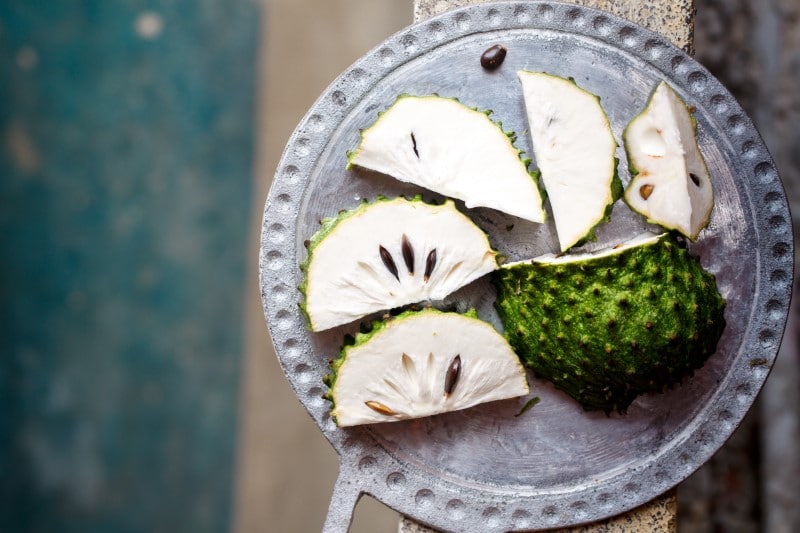
Annona muricata, or guanabana, hails from the tropical climes of the Americas and the Caribbean. This widely cultivated tree fruit can be found in India, Polynesia, and SouthEast Asia. In the US, guanabana is grown in South Florida where it’s known as soursop. Although it’s not readily found in grocery stores, guanabana can be shipped anywhere in the US from Florida.
This tropical fruit has green, prickly skin that’s inedible. The crisp flesh of the guanabana is akin to the flesh of an apple and its taste is tropical and fruity. The guanabana can be eaten raw by cutting it in half and scooping the flesh out with a spoon. Otherwise, it’s popular to make guanabana smoothies, sorbets, and Coladas. Finally, the guanabana has a nutritious makeup; it’s packed with vitamins B1, B2, and C as well as other nutrients that are known to treat nausea, head lice, and boost immunity.
Guava
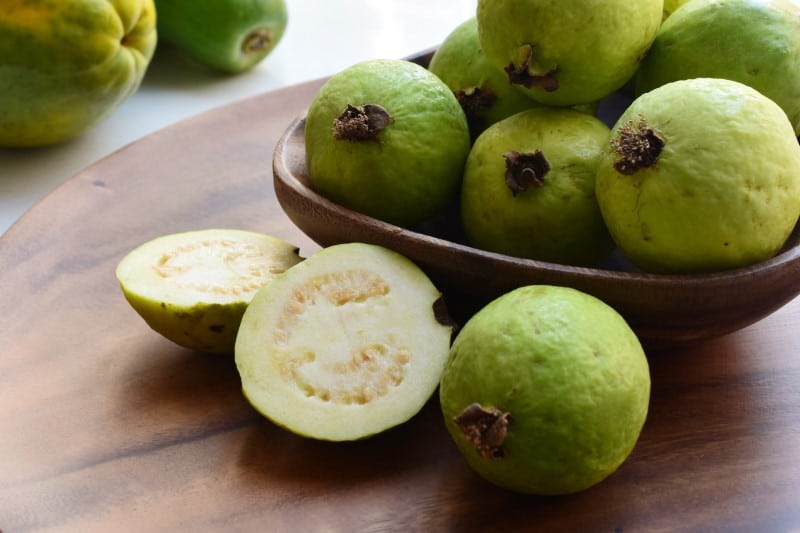
Psidium guajava, better known as guava, is a tropical tree fruit likely originating in Central and South America. Today, guava is cultivated all over the world in tropical climates, even in parts of the US such as Florida, Hawaii, and southern California. Although it’s easier to procure canned guava in US grocery stores, it can be easily ordered in its whole form from online retailers.
Guava is similar in shape, size, and color to the green pear, though its interior flesh is crispy and pink, similar to a watermelon. The rind, flesh, and seeds of the guava are all edible and the taste is sweet and likened to a cross between strawberry and pear. Guavas are nutrient dense, containing loads of vitamin C, iron, potassium, and calcium. It is said that guavas are so nutritious that just one contains the equivalent of a whole day’s worth of fruit servings.
The Final Letter
With a wide range of flavor profiles, you’ll be delighted to introduce some of these G fruits to your diet. Whether you’re looking for new produce to try or carriers of particular nutrients, you’ll surely find what you’re looking for with these delectable G fruits.
